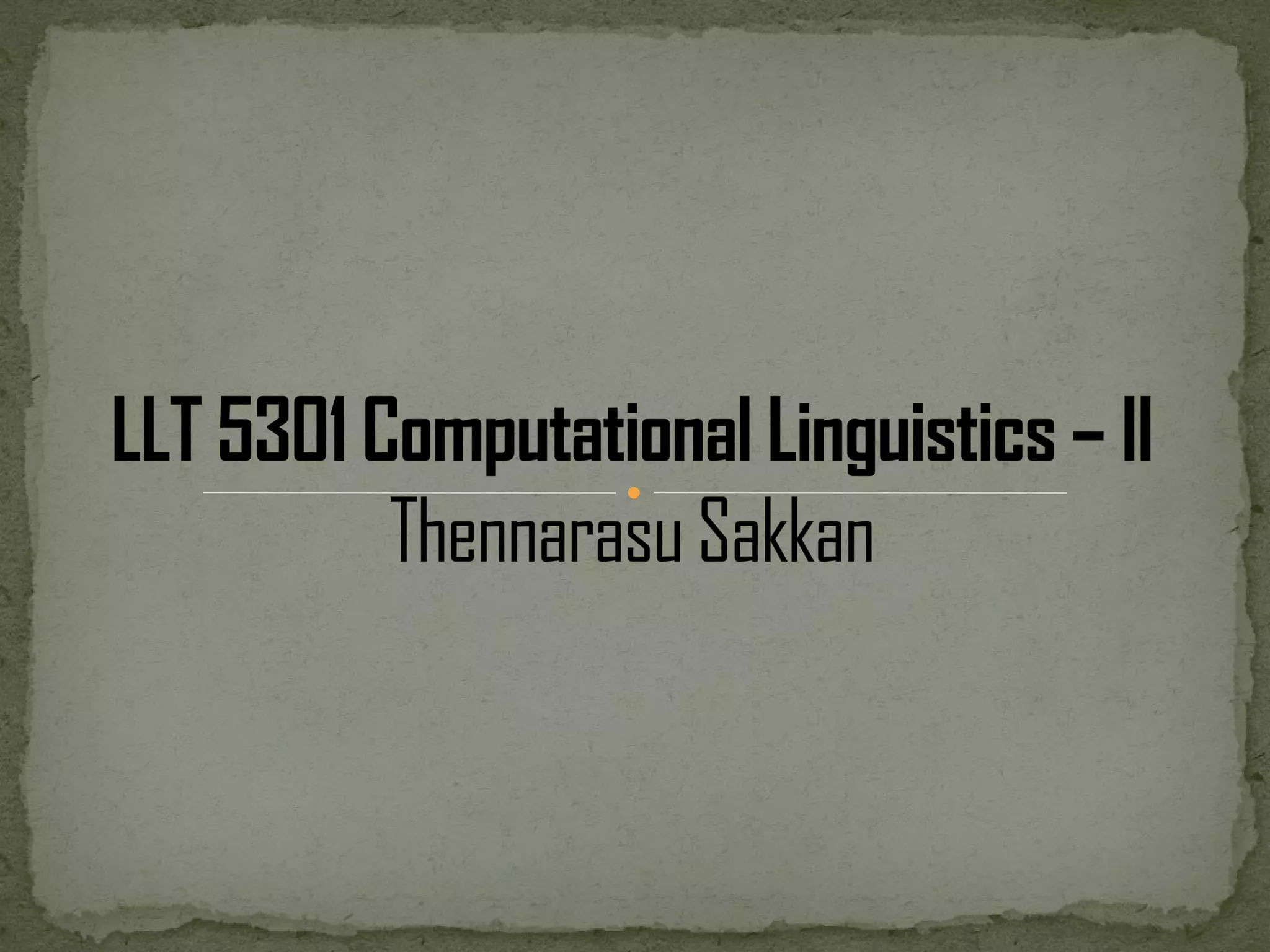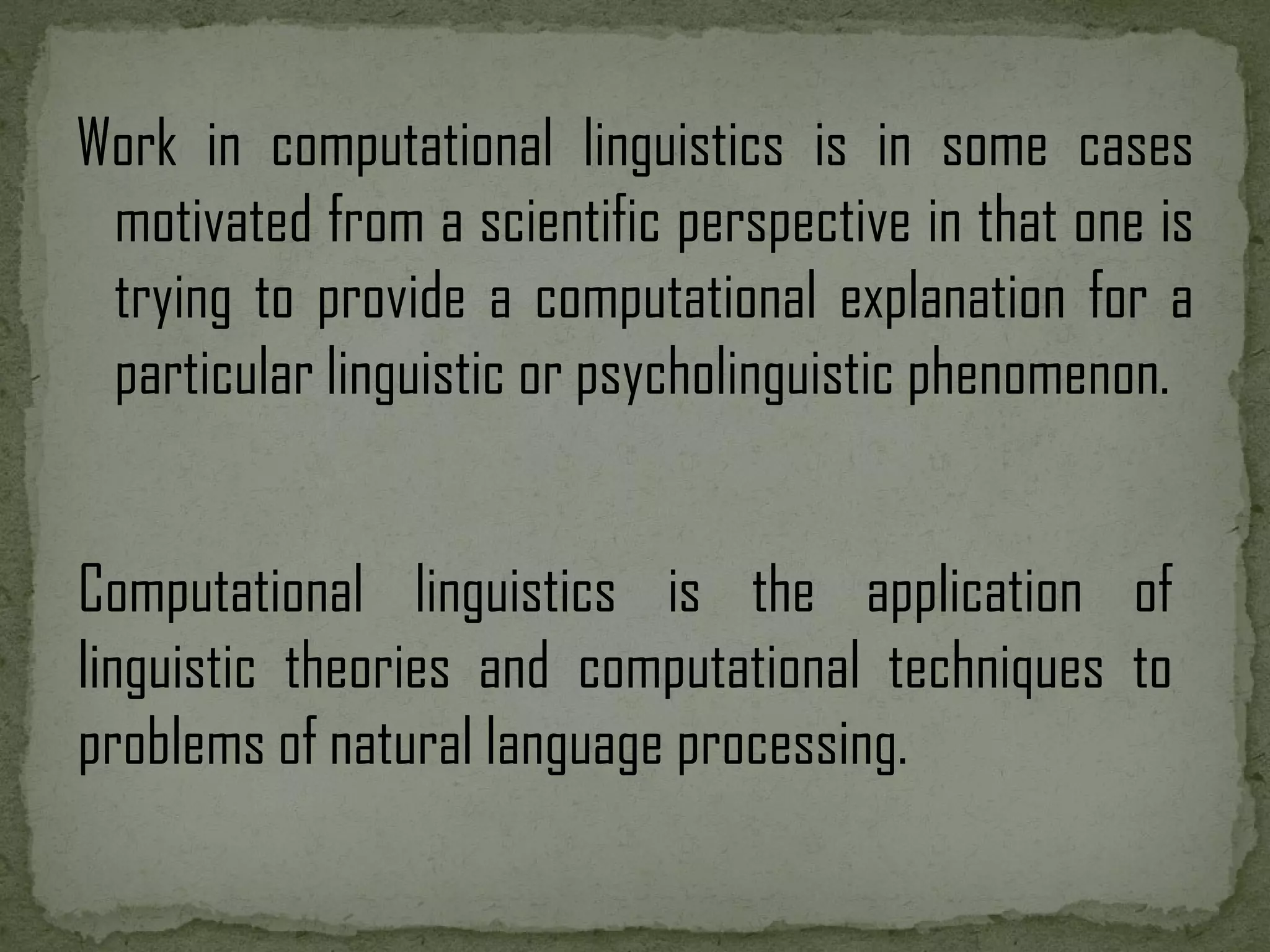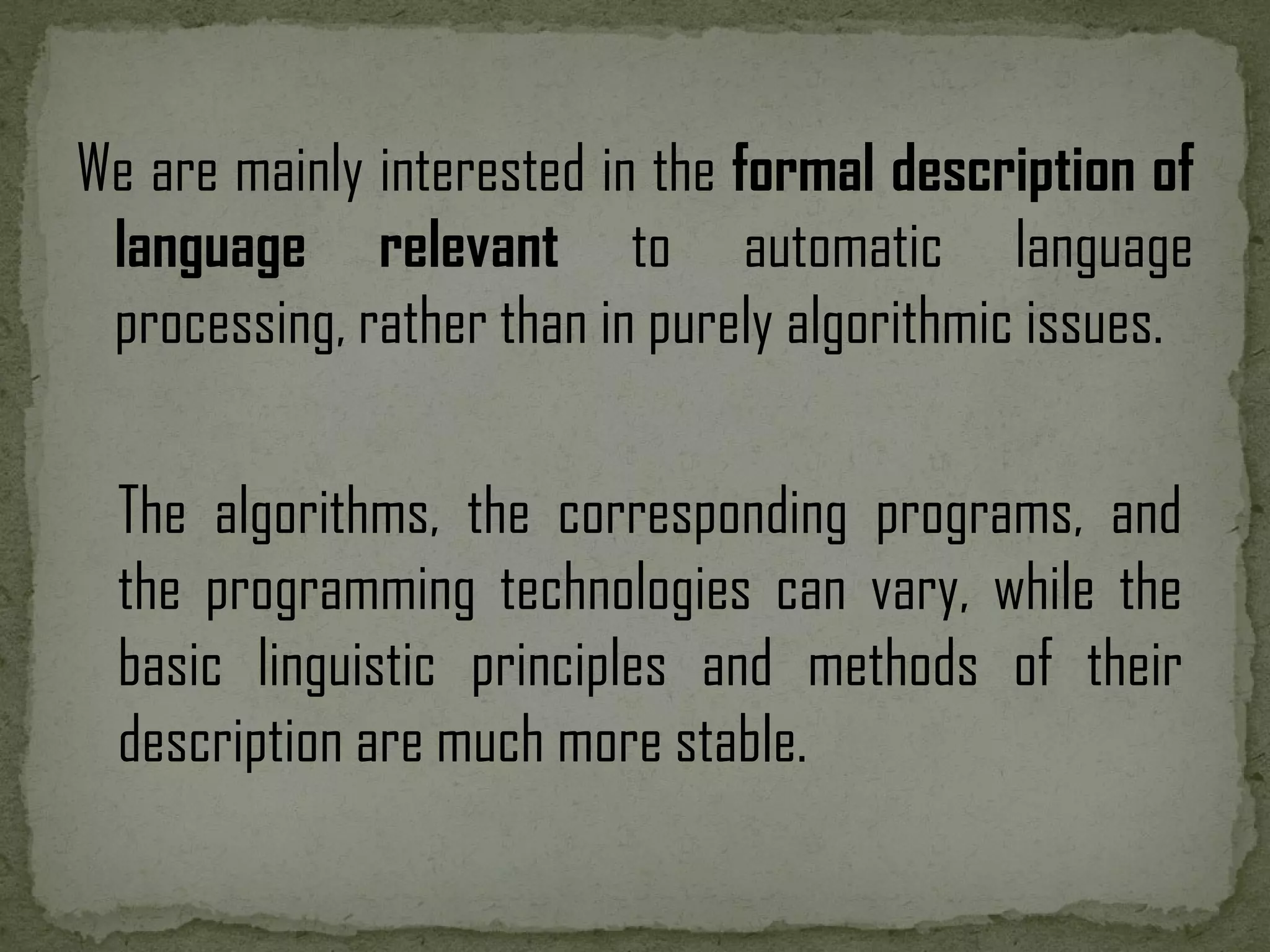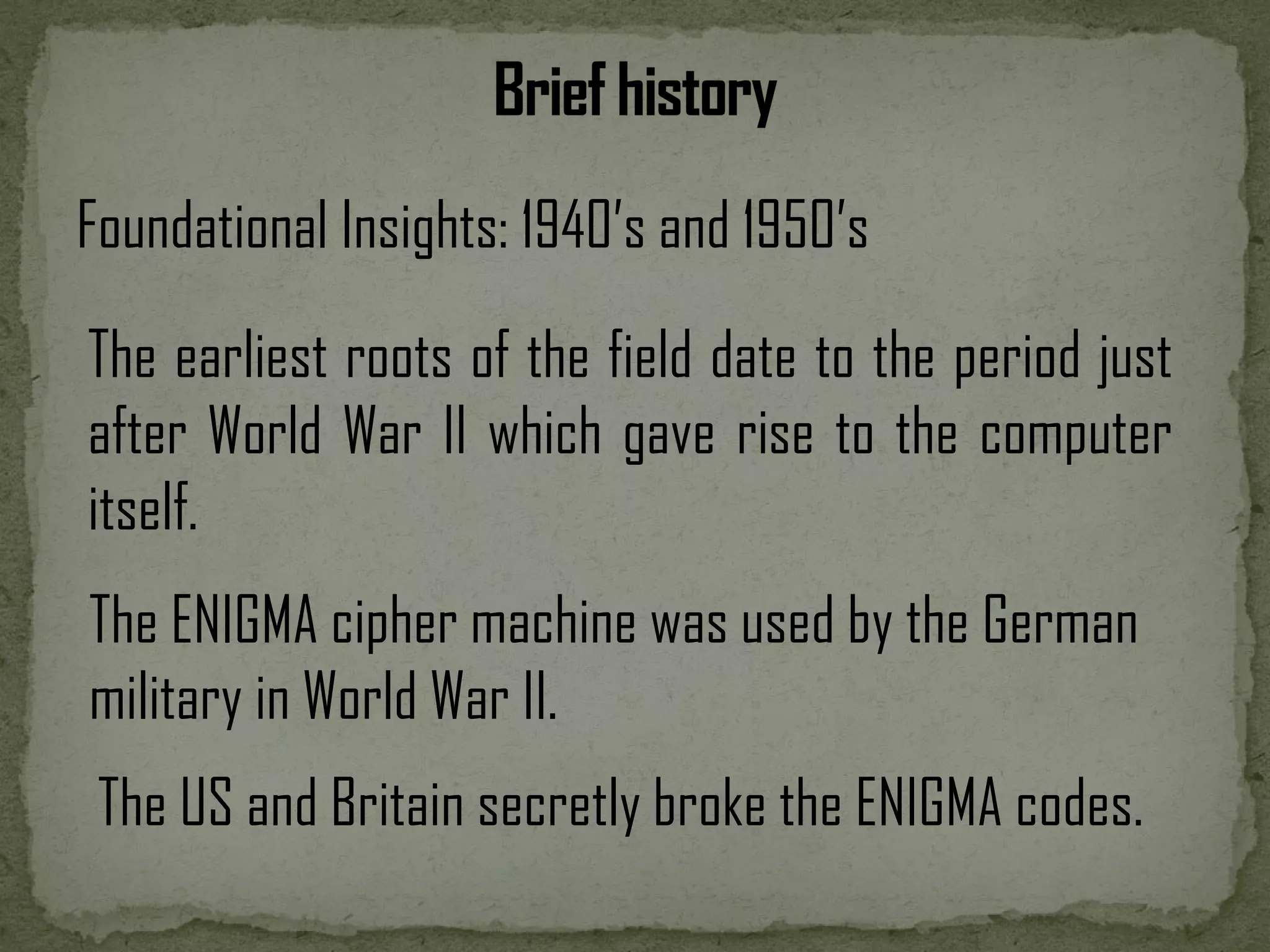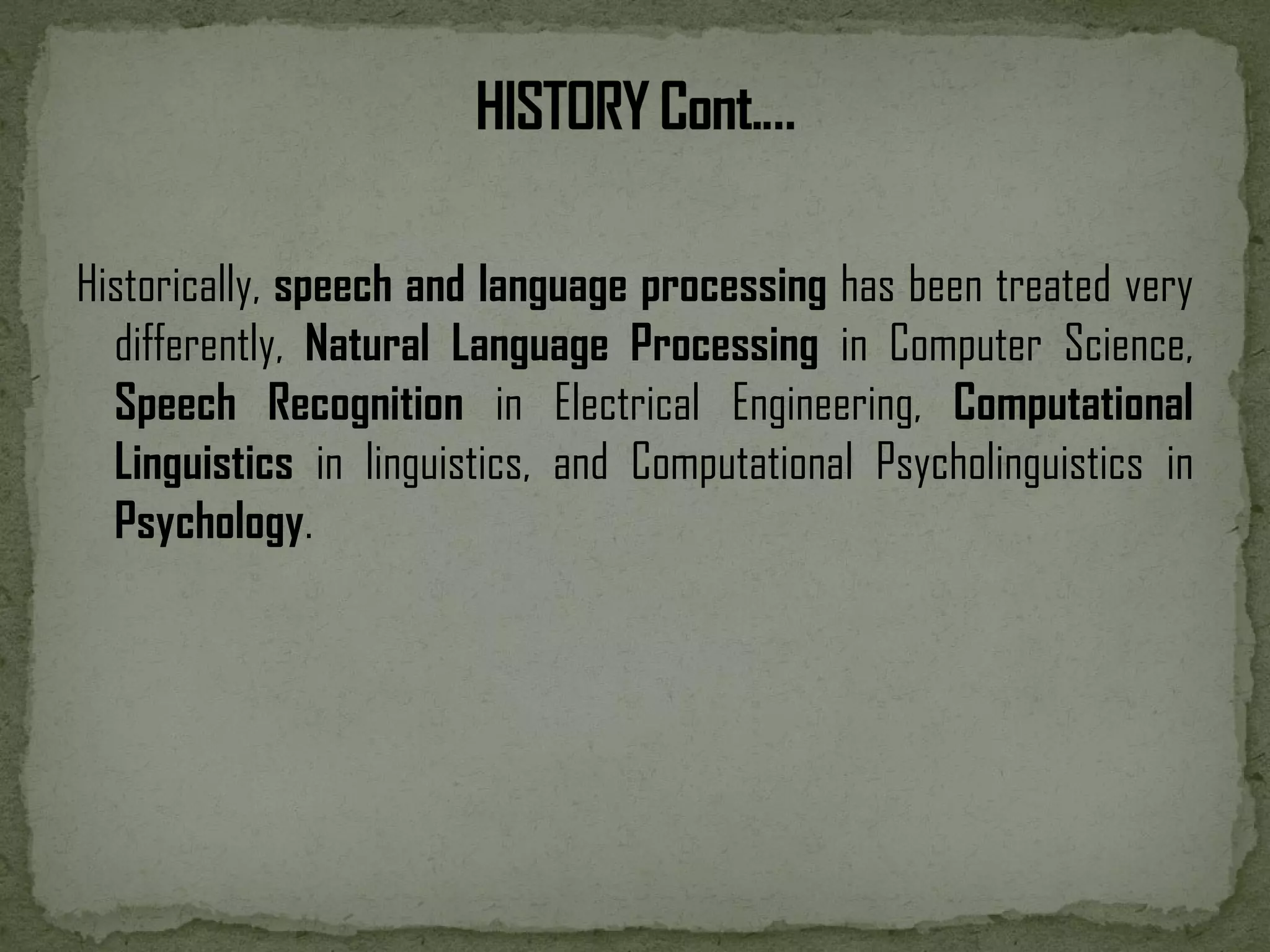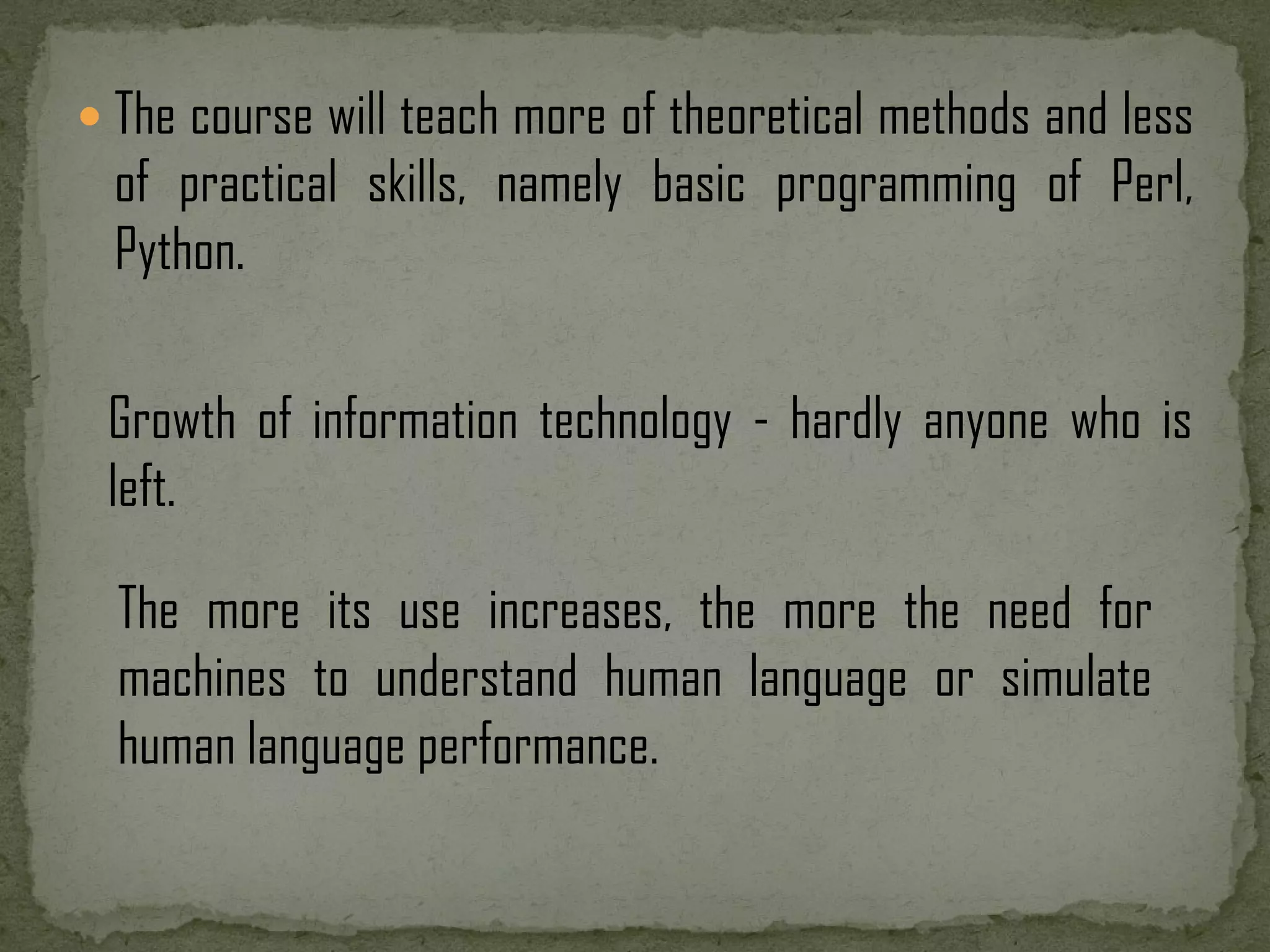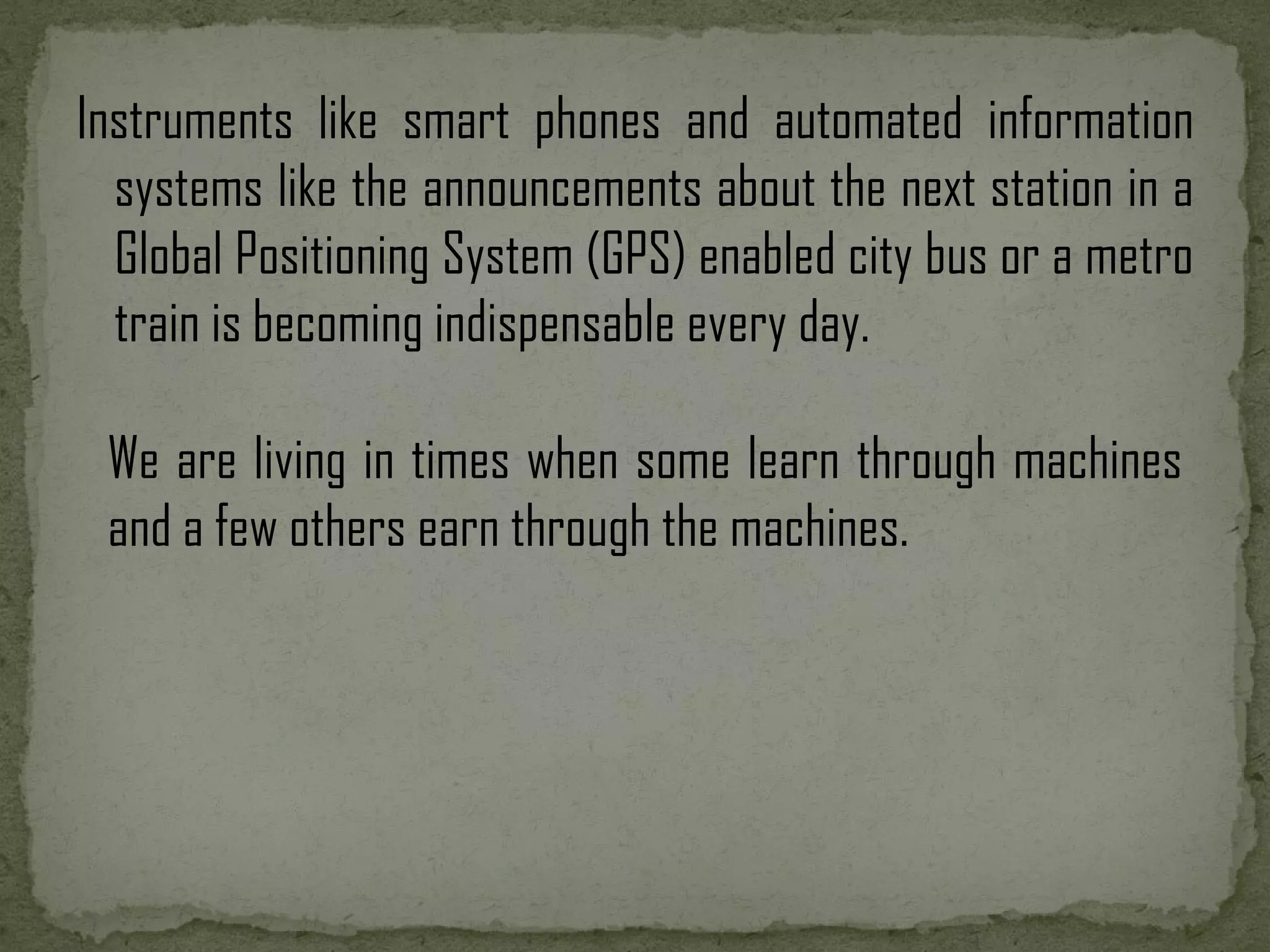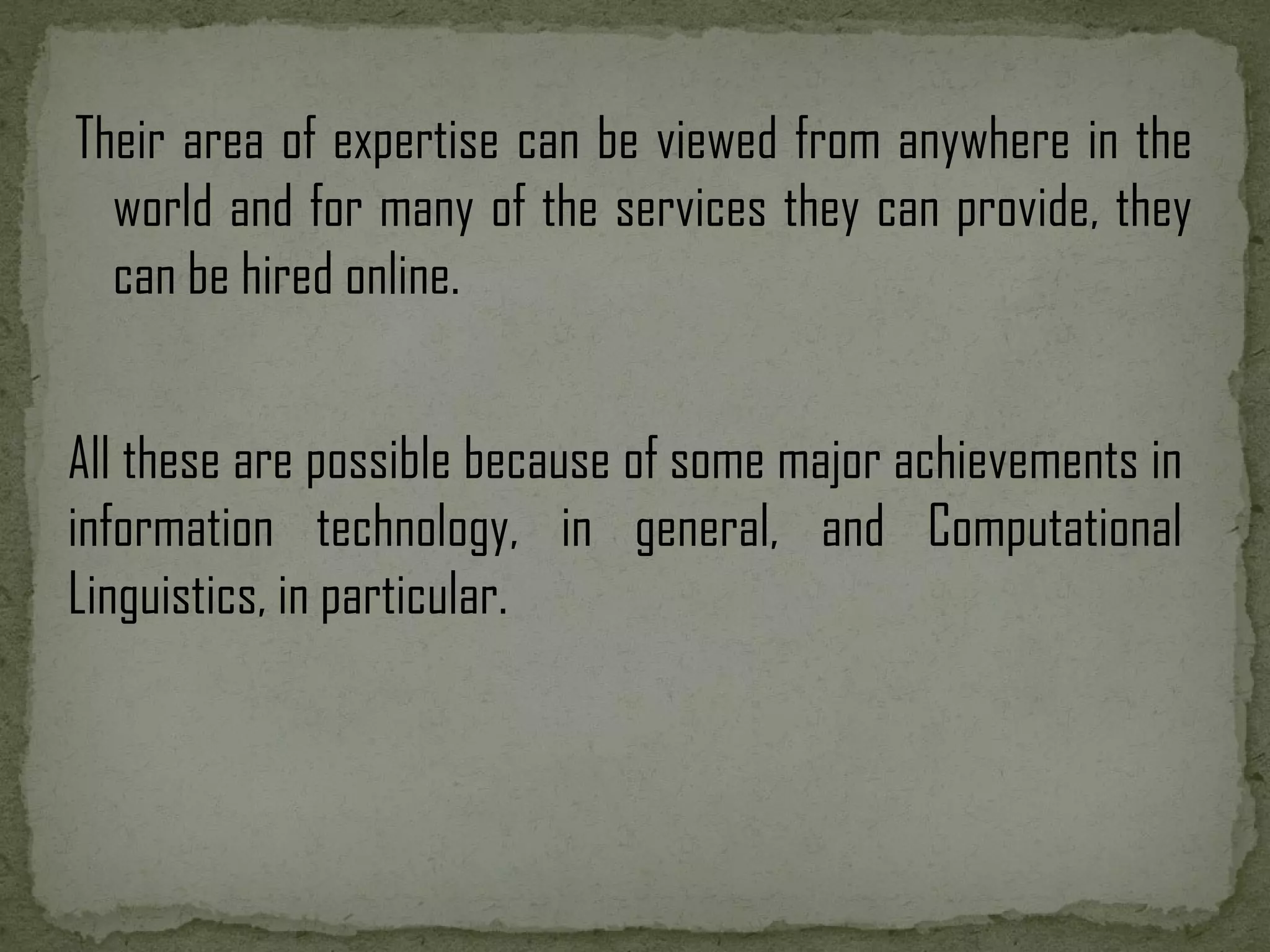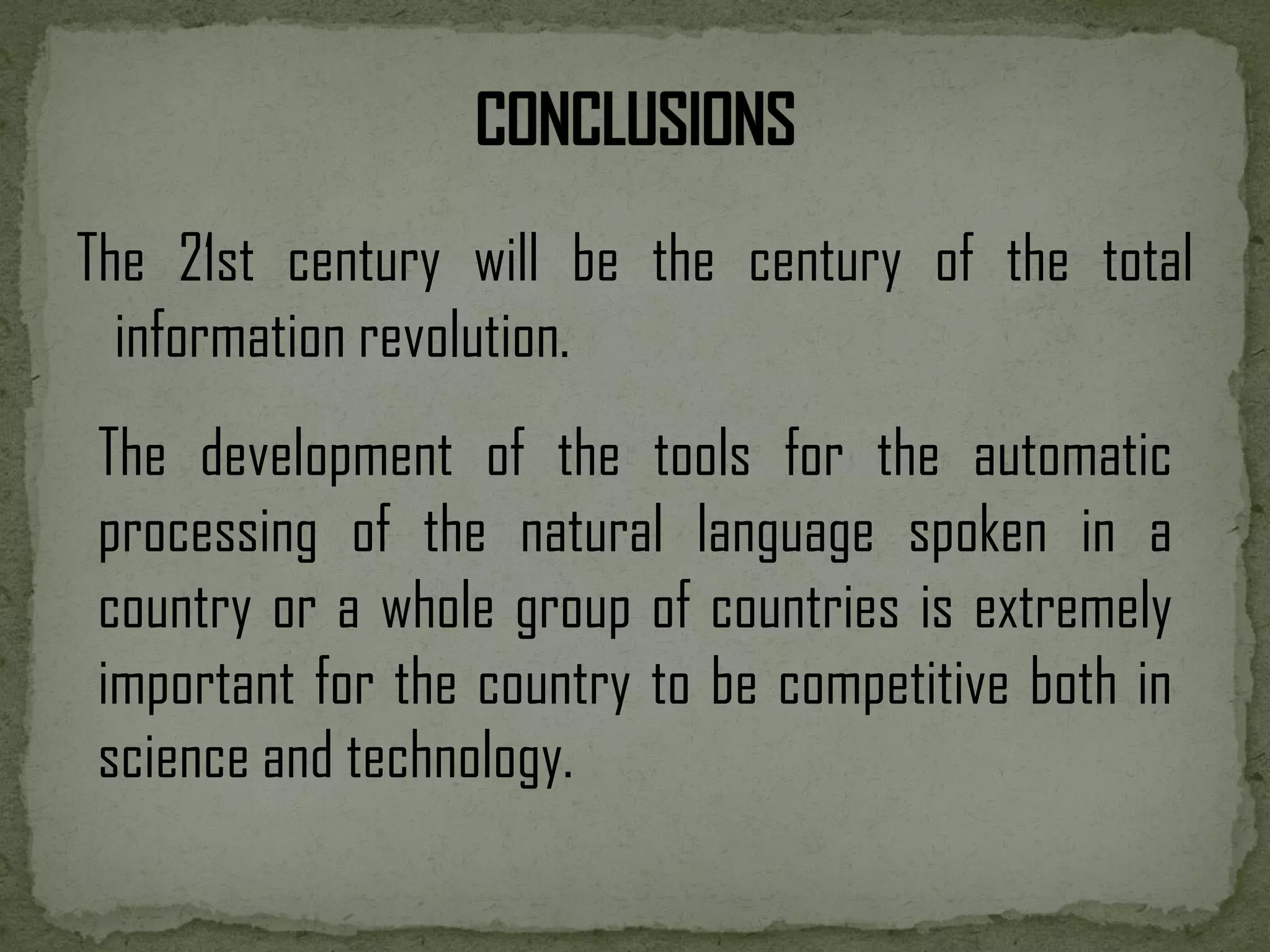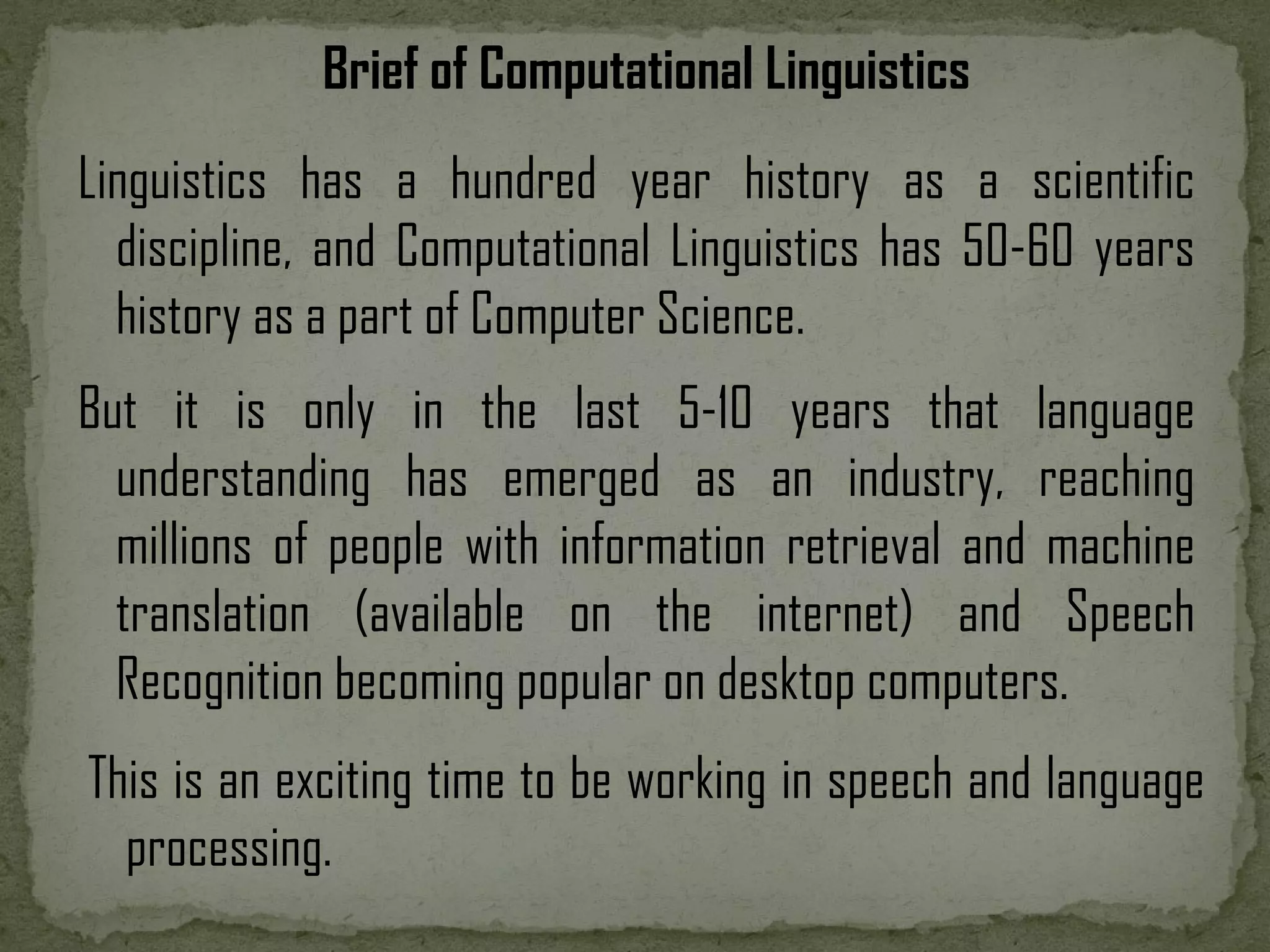The document discusses the field of computational linguistics, defining it as the scientific study of language from a computational perspective. It involves providing computational models of linguistic phenomena and using computational techniques and linguistic theories to solve problems in natural language processing. Computational linguistics aims to automatically process and understand natural language by constructing computer programs. The field has its roots in the 1940s-1950s with the development of code breaking machines and computers. Major conferences and journals in the field are associated with the Association for Computational Linguistics.
